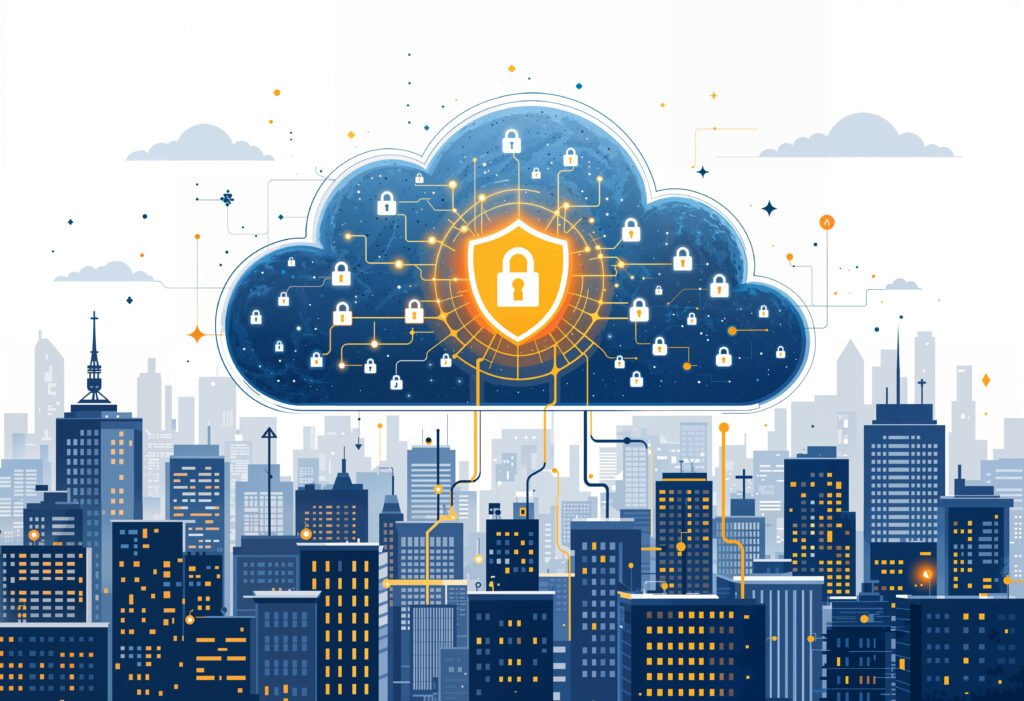CERT-In Mandates Annual Cybersecurity Audits for MSMEs in India
CERT-In Mandates Annual Cybersecurity Audits for MSMEs in India Micro, Small and Medium Enterprises (MSMEs) form the backbone of India’s economy — but they’re also becoming prime targets for cyberattacks. Recognising this vulnerability, the Indian Computer Emergency Response Team (CERT-In) has issued a crucial directive: from September 1, 2025, all MSMEs must undergo an annual cybersecurity audit conducted by empanelled auditors. This regulation ensures that even the smallest organisations are aligned with national cybersecurity standards — transforming digital security from a choice to a necessity. Why This Audit Mandate Matters According to CERT-In, India saw a 30% year-on-year increase in cyber incidents involving small and medium businesses. Attackers often exploit weaker defences in smaller firms to breach larger partners through the supply chain. The annual audit aims to strengthen every link making India’s entire digital economy more secure. Key Requirements for MSMEs Requirement What It Means for You Annual audit by CERT-In empanelled auditor Each MSME must hire an authorised auditor to assess its security posture every year. Cyber Defence Framework compliance Audits will be based on 15 cyber control elements covering IT assets, patching, network security, and data protection. 6-hour incident reporting window Cyber incidents must be reported to CERT-In within six hours of detection. Log retention requirement Maintain system logs for a minimum of 180 days for regulatory and investigative purposes. How MSMEs Can Prepare for the Audit Perform a gap assessment — Identify areas that fall short of baseline controls. Implement basic defences — Use firewalls, endpoint protection, and encrypted backups. Train your employees — Human error remains the top cause of breaches. Retain security documentation — Maintain policies, logs, and access control records. Engage certified auditors early — Early consultation helps streamline readiness and save costs. Not Just Compliance — A Competitive Advantage While many MSMEs view audits as an obligation, forward-looking organisations see them as an opportunity. Being CERT-In compliant builds trust with customers, investors, and partners opening new doors to enterprise collaborations and government projects. By investing in compliance now, you’re not only reducing risk but also future-proofing your digital credibility. Impact at a Glance Business Area Benefit of Compliance Client Trust Enhances reputation and data-handling confidence Legal Protection Reduces penalties and legal risks under IT Act Section 70B Supply Chain Meets partner and vendor cybersecurity requirements Operational Stability Minimises downtime from malware or ransomware incidents Frequently Asked Questions (FAQ) 1. Who needs to comply with the CERT-In audit? All MSMEs handling digital data or IT assets must undergo annual audits starting September 2025. 2. What if a business skips the audit? Non-compliance can lead to penalties, suspension of IT privileges, and exclusion from government tenders. 3. How can we prepare without major IT investment? Begin with a gap analysis, employee training, and documentation Lumiverse Solutions provides affordable compliance packages for MSMEs. 4. Can one audit cover multiple branches? Yes, but each branch must maintain separate security documentation and proof of control implementation. 5. Does CERT-In provide tools or templates? Yes, CERT-In and MeitY will release standard checklists and reporting templates for MSMEs to simplify readiness. Prepare Your MSME for CERT-In Audit Compliance Work with Lumiverse Solutions to make cybersecurity compliance effortless. From documentation to implementation we ensure your business is certified, compliant, and confident. Book a Free Audit Consultation Recent Posts November 1, 2025 Top 10 VAPT Best Practices for 2025: What Organisations Should Be Doing Now October 29, 2025 How to Get STQC GIGW 3.0 Certification | Complete Audit & Compliance Process Explained October 22, 2025 RBI’s Compliance Crackdown: What Co-op Banks Can Learn from Recent Penalties October 6, 2025 Nashik Cyber Fraud: Fake E-Challan App Targets Bank & WhatsApp Users September 23, 2025 CERT-In Mandates Annual Cybersecurity Audits for MSMEs in India September 2, 2025 Top 5 Cloud Security Risks in 2025: How to Protect Your Business in the Cloud August 11, 2025 SEBI Extends Cybersecurity Compliance by Two Months Know It All August 7, 2025 What Is .bank.in Domain? RBI’s New Mandate Explained July 14, 2025 Dark Pattern Solutions For Ethical UI/UX Know It All July 8, 2025 Dark Pattern Guidelines 2023: What Every Indian Business Must Know Categories Cyber Security Security Operations Center Cloud Security Case Study Technology Trends SOC 2 Compliance Audit Ensure your business meets security, privacy, and compliance standards with our SOC 2 Compliance Audit services. Protect data, build trust, and stay secure. Buy our services today! Buy Now Important Subscribe to our Research Enter your email address to subscribe to Lumiverse Research and receive notifications of new posts by email. Tell Us Your Opinion We value your perspective! Share your thoughts, feedback, or questions below. Your opinion matters and helps create a richer, more engaging conversation. Let’s connect and hear what you think about this post!
CERT-In Mandates Annual Cybersecurity Audits for MSMEs in India Read More »



